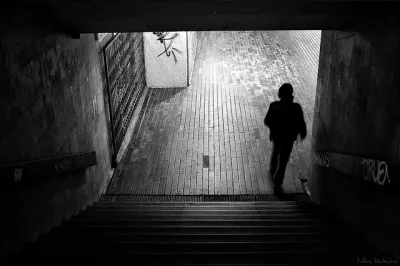The October issue of Land Lines reveals the remarkable story of how an estimated one million people came to live in subterranean apartments in Beijing.

Annette M. Kim, associate professor at the Sol Price School of Public Policy at the University of Southern California, reports on the market and policy conditions that drove so many residents to live underground.
According to the abstract for the article, "an estimated one million people are living in subterranean apartments in Beijing, where affordable housing near employment is scarce for the greater city’s 23 million inhabitants (Xing 2011). These units are often windowless subdivisions in basements and air raid shelters, and the median size is 9.75 square meters."
The city's subterranean spaces result "from a policy dating to 1950 that requires all new buildings to have common basements and air defense shelters. Construction codes specify building guidelines, including the provision of infrastructure such as electricity, water, and sewers. This supply of underground space has grown exponentially amid China’s extraordinary building boom in recent decades. Some complexes contain as many as 600 units below street level."
The article provides analysis of the underground market, the housing policy that enabled, and then reacted to, the underground conditions, and recommendations for making rental housing affordable in Beijing.
FULL STORY: Hidden City: Beijing’s Subterranean Housing Market

Analysis: Cybertruck Fatality Rate Far Exceeds That of Ford Pinto
The Tesla Cybertruck was recalled seven times last year.

National Parks Layoffs Will Cause Communities to Lose Billions
Thousands of essential park workers were laid off this week, just before the busy spring break season.

Retro-silient?: America’s First “Eco-burb,” The Woodlands Turns 50
A master-planned community north of Houston offers lessons on green infrastructure and resilient design, but falls short of its founder’s lofty affordability and walkability goals.

Test News Post 1
This is a summary

Analysis: Cybertruck Fatality Rate Far Exceeds That of Ford Pinto
The Tesla Cybertruck was recalled seven times last year.

Test News Headline 46
Test for the image on the front page.
Urban Design for Planners 1: Software Tools
This six-course series explores essential urban design concepts using open source software and equips planners with the tools they need to participate fully in the urban design process.
Planning for Universal Design
Learn the tools for implementing Universal Design in planning regulations.
EMC Planning Group, Inc.
Planetizen
Planetizen
Mpact (formerly Rail~Volution)
Great Falls Development Authority, Inc.
HUDs Office of Policy Development and Research
NYU Wagner Graduate School of Public Service



























